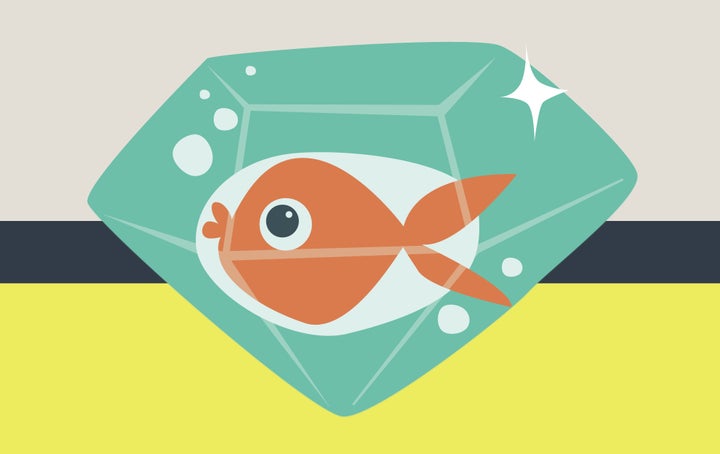Just over 10 years ago, the firm I spent most of my career with – Monitor Group – bought Doblin, a design and innovation consultancy. This was apparently a strategically prescient move, given how many similar transactions we have seen since. At the time, we had no idea what to do with these people who looked, acted, talked, and most importantly thought differently from everything we had been taught in traditional business environments.
After a lot of hard work and even more mistakes, I think we cracked the code on how to get designers and business people working effectively together. So, when Monitor joined the much larger Deloitte, the integration of our design talent went a lot more smoothly. It occurred to me recently that I only saw and experienced one side of this phenomenon: how I, as a business guy, felt when confronted with designers.
So, this month, I asked a colleague of mine, Megan Fath, to flip the perspective. A true, dyed-in-the wool designer (who I believe has laughed at some of my linear tendencies in the past), she penned a few words of advice for people like me as they get to know design talent and integrate their capabilities into their work. Here’s what she had to say.

Shiny objects and goldfish: Helping designers and business people work better together
As John Maeda’s 2016 and 2017 Design in Tech reports captured, traditional management consulting firms are continuing to try and integrate smaller design companies into their business – in fact, just recently, BCG announced the acquisition of Maya Design. As more and more agencies are acquired by larger companies, designers and business people are co-habitating in the workplace. Business leaders hear new voices on their conference calls, and designers see new faces in their project rooms. Just as Geoff and his endearing linear tendencies were a new collaboration challenge to me (and I didn’t know that he’d catch a few of my laughs), my own circular and creative thinking tendencies were foreign to him and other colleagues.
What seems like a sudden trend of acquisitions has really been a slow migration. Deloitte, Monitor, and Doblin are still working to meld the disparate cultures and understand the native languages of one another. So, how can business leaders leverage these new methods and processes that designers bring to their work? How do you make sure that this investment in design lands in the sweet spot beyond “shiny, new object” or “goldfish in a bowl”?
As the “shiny new object,” it can feel exciting as the calendar fills up with meeting invites. In time, being brought out to showcase the new design talent, though, can actually amplify the sense of isolation and disconnectedness, as often the meetings weren’t directly tied to a design need or project. Another phenomenon was the design tours – when I first started at Doblin, I presumed the groups passing by my desk and our project spaces were led by the building management for other prospective tenants. The guide would discuss the unique aspects of the space and the distinctive inhabitants – which became what I call the “goldfish in a bowl” experience. Imagine my surprise when I discovered the guides and tour participants were part of our extended community!
Obviously, the questions above lay the groundwork for a lot to cover. And there are no easy answers. As a designer excited by the possibilities of business and design working closely together, I offer three key pieces of advice, learned through trial and error, as a starting place for leaders hoping to collaborate better with their design teams.
1. Bring designers’ questions and problems, not answers.
One of the challenges for designers working in a traditional business environment is when project teams bring answers instead of questions and problems to solve. It makes total sense. Clients are looking for expertise and answers. The challenge is that this is often at odds with the design process.
Designers are typically trained in the design thinking process to lead open-ended inquiry, rather than start with a presumed small set of possible answers. For example, a business colleague may come up to a designer saying, “The data we’ve looked at suggests that our client’s customers have the lowest level of satisfaction in their purchase process during their online checkout. So they need to improve the POS transaction experience—can you help us bring that to life in a compelling and visual way?” But maybe the answer lies elsewhere—somewhere in the process, the way information was requested or delivered. Design isn’t just visual.
I think this is often a surprise to my business-leaning colleagues as the assumption in scoping work is that we know what the solution or what we will design in the end. The middle-ground is often in forming a hypothesis and being prepared to disprove it along the way. Going through this process is the fun part. Joining in the inquiry, and combining a business perspective with a creative perspective can lead to answers neither group could have arrived at alone—and that’s the true value of bringing design in-house.
2. Be an advocate and empower a voice for designers.
Many designers are still trying to create the right language systems to thrive in a more traditional business context, just as business leaders are learning about the full implications of design thinking. Design colleagues often need help setting the stage for conversations that position the value and skills of design, so designers can speak to their craft—beyond that of just “making things look pretty.”
Often my business-leaning colleagues seek advice on how to speak to design during client meetings, feeling the pressures to represent a field foreign to them. Their hearts are in the right place as they seek to be fantastic collaborators and advocates. But there is a difference in being the voice for design versus helping other voices rise.
One of my favorite strategy collaborators will set aside time before a meeting to brainstorm on our collective point of view, and we each then divide up the talking points as they pertain to our experience sets. Bring your designers to the table, and provide opportunities for them to explain their craft, their philosophy, and their process. Ask questions to clarify understanding. When you’re working with a new group of in-house designers, it’s especially important to talk through how work gets done. In these new contexts, there is an absolute need to double down on our ability to communicate the benefits and needs of design.
3. Diversity of thinking is the benefit—don’t kill it.
Creative and business talent have very different ways of working, and very different ways of seeing things. This is the value of bringing them together. But it won’t work if the groups impose their way of working on the other—in essence, just as designers typically find prospective project planning at odds with the design process, business people tend to get uncomfortable sitting all day in a project room talking through the problem and what seems to them an unending list of possibilities to pursue. There’s a middle ground that can be found through understanding and negotiation.
One of the challenges is in the balance of how protective to be in preserving design culture—this is more than questions of dress code or environment, extending into process and work style. From the management consulting side, having numerous languages and processes can seem wildly inefficient. Yet some of these differences are necessary and vital—there is value to be found when efficiency isn’t the only goal.
Keep your eye on the prize: Innovative solutions for the future
In the midst of co-habitation, our collective organization continues to adapt both our business and design practices. These three shifts are hopefully a helpful starting place as we consider these nuanced behavior changes as leaders from the business-side. These can help the design teams feel less like goldfish in a bowl, and, more importantly, help your company realize the benefit of diverse thinking to create innovative solutions for the future.
